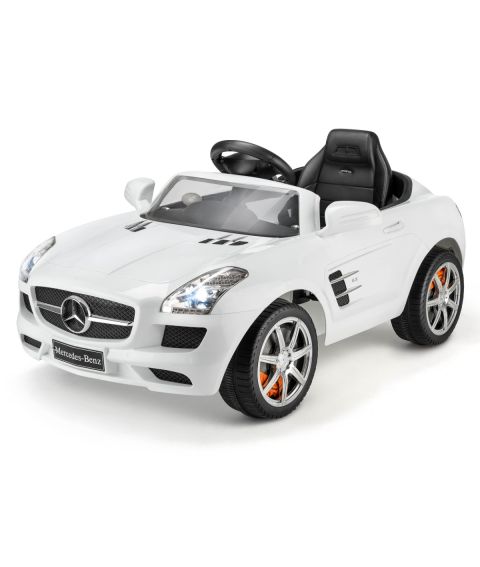Good Reasons On Deciding On Kids Ride On Cars
Good Reasons On Deciding On Kids Ride On Cars
Blog Article
What Should I Be Aware Of About The Battery Life And Charging Time Of An Electric Ride-On Kids Car?
Knowing the charging duration and battery life of children who ride electric on their cars will allow you to ensure uninterrupted playtime. Here's the essential information you require to know about the type of battery.
The majority of electronic ride-on vehicles designed for children are powered by rechargeable batteries. They are usually lithium-ion batteries or lead acid batteries. Lithium ion batteries have a longer battery life than lead-acid and charge faster.
Battery Capacity
The time of operation for a ride-on car is determined by the battery capacity. It is measured in amp hours or Watt-hours. Battery capacity is vital since it determines the length of time the car's ride-on capabilities last before recharging.
Run Time -
The run time of an electric ride-on car refers to the amount of time it is able to operate continuously on a single charge. It is affected by a variety of factors, including the capacity of the battery, power of the motor, the terrain or the how much weight a rider.
The average run time of electric ride-ons varies between 30 to 2 hours. However, some batteries that have high capacity may have longer time-to-run.
Charging Time
The charging time is how long it takes to completely charge the battery after it has been depleted. The charging time depends on the charger's specifications, battery capacity, and charging method.
In general, the charging time for electric vehicles is between 8 and 12 hours. Certain models, especially those that use lithium-ion batteries, may have faster charging times.
It is essential to adhere to the instructions of the manufacturer when charging in order to ensure the security and longevity of the battery. The battery's performance may be negatively affected if the battery has been either overcharged or undercharged.
Charging Method
Chargers that charge electric rides are typically connected to standard electrical outlets. Some models offer fast charging or include an intelligent charger that regulates the speed at which the battery is charged.
To prevent any damage to the battery or electrical system Make sure the charging connector and port are compatible with chargers provided by your ride-on vehicle.
Batteries Additional -
Some electric ride on cars provide the option of buying additional batteries or batteries to extend play time. Batteries that are extra allow you to replace depleted batteries by fully charged batteries which can reduce downtime.
When you know the charging duration and battery life of your electric car for kids you will be able to enjoy endless playtime and adventures. Continuously charging the battery, and following appropriate charging guidelines will maximize battery life and performance. View the top rated ride on toys for blog recommendations including childs car toy, car electric ride on, car for toy, electric rideons, car for toy, kiddies cars, electric two seater cars, toy the car, race car toy car, toy cars toy car and more. . 
Why And How Do There Exist Different Levels Of Expertise For Electric Ride-On Cars?
The electric ride-on cars typically come with a variety of speed settings along with controls. They are designed to meet the needs of different levels of ability and make sure that children have a secure experience. How and why are these features put into place?
Different children are at different levels of skill and confidence when it comes to driving ride-on vehicles. Different speed settings enable parents to alter the maximum speed based on the child's ability, which reduces the chance of collisions or accidents.
For children who are younger or just beginning younger children, slower speeds are ideal for a ride-on vehicle. The higher speeds are best for older children and children who have more experience.
Gradual Learning Curve -
With a variety of speeds, electric ride on cars give children a learning curve that lets them develop their driving skills. The beginning drivers are able to build confidence and become familiar with the controls, by starting at lower speeds.
As the child's driving capabilities improve as they improve, parents can increase their speed gradually. This provides them with a sense progress and accomplishment.
Parents Control Parents Control
Some electric ride-on cars come equipped with parental control features which allow parents to control the speed limit of the vehicle from a distance. This feature provides parents with peace ofmind that they can alter speed or intervene according to the need, in order to ensure safety for their child.
The model you choose will determine parental control options may include speed limits on remotes, remote emergency stop buttons or remote steering options.
The ability to adapt
As children grow, so can their interests and capabilities. Multiple-speed electric ride-on vehicles provide the flexibility to adjust and adapt to changes in children as they grow.
As the child grows in confidence and ability, they are able to advance to higher speeds. This makes for a more thrilling ride. On the other hand parents may reduce the speed of the ride for younger children or friends.
Customization
Multiple speed settings allow for customization and personalization of the experience of riding based on individual preference and needs. The speed can be adapted to suit the child's comfort and level of enthusiasm.
Some electric ride-ons may offer additional control options, for example variable acceleration or braking sensitivity that allow for fine-tuning the driving experience in order to satisfy the needs of the driver.
Electric ride-on vehicles with various settings for speed controls, as well as other features that allow for a custom and safe ride. They are appropriate for children of different skill levels and preferences. These features promote confidence, skills development and fun while ensuring parents can supervise and intervene as needed to ensure their child's safety. Have a look at the best go here about electric kids cars for website recommendations including electric ride on cars, cars pedal car, ride of car, a toy car, electric ride on cars, lambo toy car, ride ons, childrens digger, remote control childrens electric cars, car for toy and more. . 
What Kinds Of Remote Controlled Cars Are On The Market? Pros And Cons?
Remote control cars for children Also known as RC cars or remote-controlled automobiles, come in various sizes and styles. They also come in a variety of prices to meet different preferences and budgets. Here's an overview of the types, sizes, prices, pros, and cons of remote control cars for children - Types of Remote Control Children's Cars -
Electric RC Cars - Battery-powered remote-controlled cars that can be used for indoor and outdoor use. The cars come in different styles such as buggies and trucks.
Nitro RC Cars – Gas-powered remote controlled vehicles that have more power and performance, but more expertise and maintenance is required in order to operate. They are larger and usually more expensive than electric RC Cars.
Scale Models are remote controlled replicas that include cars, trucks and aircrafts. Scale models range from 1 -10 to 1-24, with larger scales offering more detail.
Sizes -
Remote control cars for children come in various sizes, from small micro-sized models to large-scale replicas. The size can have an impact on the performance of a vehicle, its speed, and the handling characteristics.
Smaller cars which are lightweight and compact, are ideal to be used indoors or by younger children. Models with larger scales are more powerful, durable and are therefore perfect for off-road and outdoor racing.
Prices
Prices vary based on size, features brand and the build quality.
Smaller electric cars can be purchased for $20-$100, and larger electric or nitro-powered RCs may be purchased for $100-$500 or more.
Scale models, top-quality hobby RCs range between several hundred dollars to more than $1,000 based on the level of detail and performance.
What are the pros and cons?
Pros -
Entertainment - Remote control children's cars provide hours of entertainment and excitement for children and adults alike.
Skill Development. The operation of a RC vehicle lets children develop hand-eye coordination as well as spatial awareness and problem-solving capabilities.
Social Interaction. You can enjoy RC vehicles with your friends and family, which promotes social interaction.
Customization - A lot of RC cars can be customized using aftermarket parts as well as upgrades and accessories to enhance performance and look.
Cons
Cost – A remote-controlled car for kids with the latest features or hobby quality models can cost quite a bit.
Children might find it difficult to control the RC cars initially.
Maintenance: All RC vehicles require regular maintenance, including cleaning regularly, oiling, and repair or replacement of parts.
Safety Risks RC cars can pose safety risks including falls, collisions and electrical dangers if they aren't used under supervision of an adult and care.
In general, remote-controlled children's vehicles are an exciting and educational experience for children of all ages. However, when choosing the right model for your child you should consider things like the price size, dimensions, features and security. Hobby-grade RC cars may be more suitable for older kids and those who are avid, while less complex models are suitable for younger youngsters and those who are just beginning. Read the top rated kids ride on cars kidscars.co.uk info for website recommendations including car toy toy, toy car for car, kids electric cars, toy toy cars, childrens electric ride on, two seater childrens electric cars, remote control childrens electric cars, childs car toy, electric ride on, pedal car and more. .